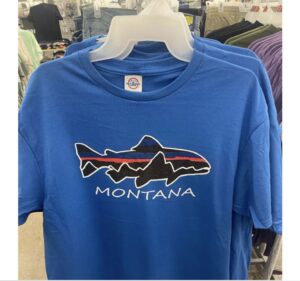Giunge notizia della Corte del Delaware 26 aprile 2023 , C.A. No. 2021-0827-JTL, ONTARIO PROVINCIAL COUNCIL OF CARPENTERS’ PENSION TRUST FUND e altri fondi c. Walmart e alcuni suo amministratori. nella triste vicenda facente parte della cd opioid epidemic connessa al suo ruolo come distributori di oppiacedi nelle sue farmaceie
Gli attori azionisti <<seek to shift responsibility for the harm that Walmart has suffered to the fiduciaries whom they say caused it. They maintain that the directors and officers of Walmart breached their fiduciary duties to the corporation and its stockholders by (i) knowingly causing Walmart to fail to comply with a settlement between the U.S. Drug Enforcement Agency (“DEA”) and Walmart (the “DEA Settlement”); (ii) knowingly causing Walmart to fail to comply with its obligations under the federal Controlled Substances Act and its implementing regulations (collectively, the “Controlled Substances Act”) when acting as a dispenser of opioids through its retail pharmacies, and (iii) knowingly causing Walmart to fail to comply with its obligations under the Controlled Substances Act when acting as a wholesale distributor of opioids for its retail pharmacies>>.
Allegano l’esisstenza di specifici red flags.
Qui ricordo solo il passso per cui mai la busienss judgment rule può coprire violazioni di legge
<< Some projects involve more legal risk than others and, depending on the
outcome, can expose the corporation to civil liability. When directors make a business decision that carries legal risk, but which otherwise involves legally compliant conduct, then the business judgment rule protects that decision. The same principle applies to a board’s decision to act or not act in response to red flags. “Simply alleging that a board incorrectly exercised its business judgment and made a ‘wrong’ decision in response to red flags, however, is insufficient to plead bad faith.” Melbourne Mun. Firefighters’ Pension Tr. Fund v. Jacobs, 2016 WL 4076369, at *9 (Del. Ch. Aug. 1, 2016), aff’d, 158 A.3d 449 (Del. 2017). To establish the requisite inference of bad faith, a plaintiff would have to plead
(and later prove) that the directors knew from the red flags that the corporate trauma was coming and nevertheless forged ahead for reasons unrelated to the best interests of the corporation. “The decision about what to do in response to a red flag is one that an officer or director is presumed to make loyally, in good faith, and on an informed basis, so unless one of those presumptions is rebutted, the response is protected by the business judgment rule.” McDonald’s Directors, 2023 WL 2293575, at *17.
What a corporate fiduciary cannot do, however, is make a business judgment to
cause or allow the corporation to break the law. “Delaware law does not charter law breakers.” In re Massey Energy Co., 2011 WL 2176479, *20 (Del. Ch. May 31, 2011). As the Massey decision explains, Delaware law allows corporations to pursue diverse means to make a profit, subject to a critical statutory floor, which is the requirement that Delaware corporations only pursue “lawful business” by “lawful acts.” As a result, a fiduciary of a Delaware corporation cannot be loyal to a Delaware corporation by knowingly causing it to seek profit by violating the law. Id. at *20 (footnoted omitted). “[I]t is utterly inconsistent with one’s duty of fidelity to the corporation to consciously cause the corporation to act unlawfully. The knowing use of illegal means to pursue profit for the corporation is director misconduct.” Desimone v. Barrows, 924 A.2d 908, 934–35 (Del. Ch. 2007) (cleaned up). “[A] fiduciary may not choose to manage an entity in an illegal fashion, even if the fiduciary believes that the illegal activity will result in profits for the entity.” Metro Commc’n Corp. BVI v. Advanced Mobilecomm Techs. Inc., 854 A.2d 121, 131 (Del. Ch. 2004).
The business judgment rule plays no role in a decision to proceed in a way that
violates the law. As a result, there is a fundamental difference between the following two scenarios, each involving a legal assessment.
• In one hypothetical scenario, the lawyers say: “Although there is some room for
doubt and hence some risk that our regulator may disagree, we believe the company is complying with its legal obligations and will remain in compliance if you make the business decision to pursue this project.”
• In the other hypothetical scenario, the lawyers say: “The company is not currently in compliance with its legal obligations and faces the risk of enforcement action, and if you make the business decision to pursue this project, the company is likely to remain out of compliance and to continue to face the risk of an enforcement action. But the regulators are so understaffed and overworked that the likelihood of an enforcement action is quite low, and we can probably settle anything that comes at minimal cost and with no admission of wrongdoing.”
In the former case, the directors can make a business judgment to pursue the project. In the latter case, the decision to pursue the project would constitute a conscious decision to violate the law, the business judgment rule would not apply, and the directors would be acting in bad faith>>.


